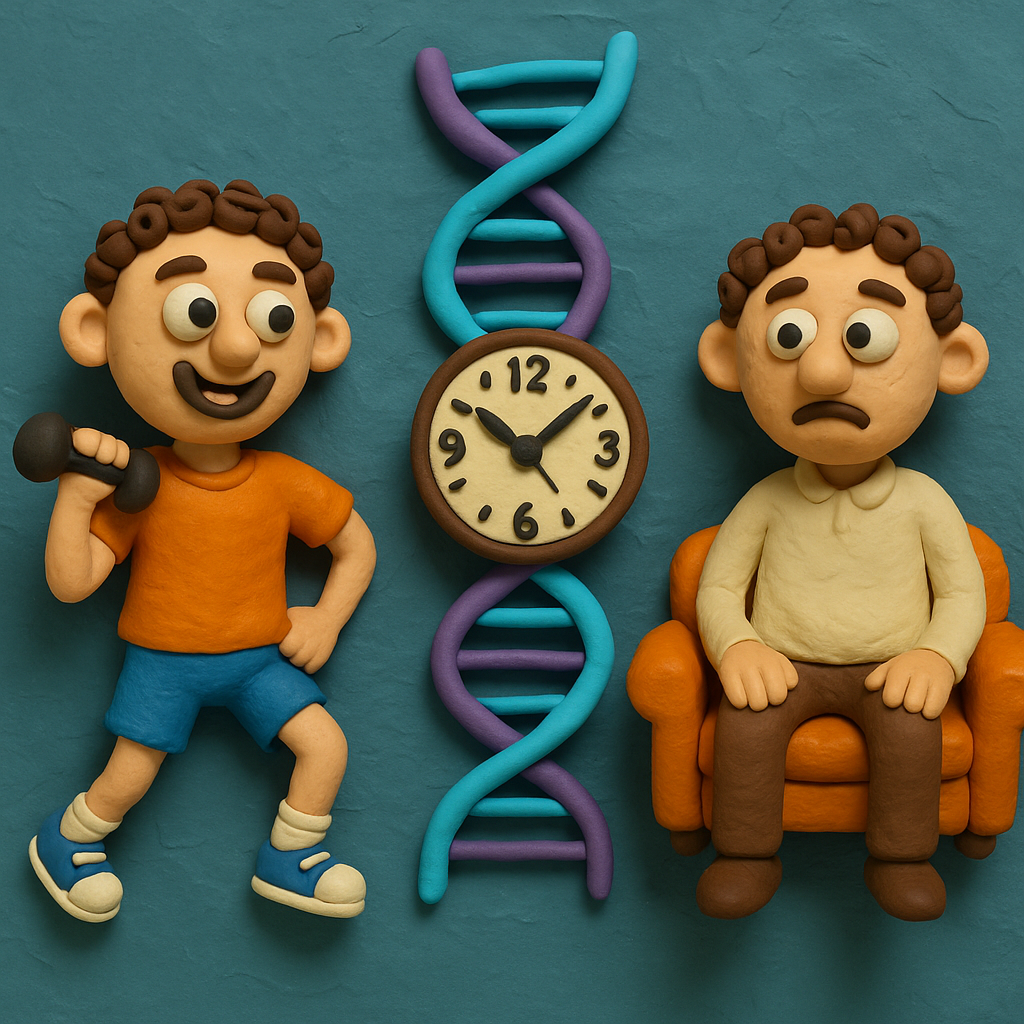
Does your destiny lie in exercise, your genes, or your lifestyle?
How did your country report this? Share your view in the comments.
Diverging Reports Breakdown
Does your destiny lie in exercise, your genes, or your lifestyle?
A study of Finnish twins examines genetics, lifestyle, and biomarkers to investigate whether physical activity alone is the key to a longer life. The most active experienced a lower risk of mortality than the sedentary, by roughly 20%. But when adjusted for other lifestyle factors, especially smoking, the risk reduction decreased to 7%. For dose-response enthusiasts, the findings revealed that moderate activity was sufficient for mortality reduction. There was no additional benefit at higher levels, and in fact, a slight decline was observed. While physical activity generally appears beneficial, the evidence does not robustly support a direct causal relationship. The study reminds us that longevity is more complex than just logging steps or lifting weights. WhilePhysical activity matters, your genes, daily habits, and broader lifestyle choices collectively shape your biological aging and lifespan—suggesting moderation and consistency, not extremes, may be the smartest path to longevity.
Long-term physical activity is a hallmark recommendation physicians make to patients for a long, healthy life. Despite that commonsense recommendation, scientific evidence of the impact of exercise on longevity is hampered by a lack of randomized controlled studies. The evidence we have comes from limited observational studies. Moreover, scientific investigation is further confounded by genetics and other lifestyle factors.
A study in the European Journal of Epidemiology aims to unravel the relationship, utilizing a long-term longitudinal survey of Finnish twins with 30-year mortality data. Data on exercise, health status, and the usual demographics were all self-reported. Mortality was taken from national indexes. [1]
Because biological aging may underlie mortality, researchers tried to integrate their findings using epigenetic clocks, biomarkers of aging. The two clocks were DNAm GrimAge, a specifically designed “clock” predicting mortality, and DunedinPace, which calculates the pace of aging over time.
Results
The researchers created four distinct classes of long-term activity in a large cohort of Finnish twins: sedentary, moderately active, active, and highly active. As would be anticipated, the most active experienced a lower risk of mortality than the sedentary, by roughly 20%. But when adjusted for other lifestyle factors, especially smoking, the risk reduction decreased to 7%.
For dose-response enthusiasts, the findings revealed that moderate activity was sufficient for mortality reduction; there was no additional benefit at higher levels, and in fact, a slight decline was observed. The dose-response of exercise and mortality, like many biological pairings, is more curvilinear than linear. The response seemed to be more consistent with short-term (10-year) mortality than longer timeframes.
Biological aging, as measured by those “clocks,” shared that same u-shaped curvilinear pattern between the sedentary and highly active, both appearing biologically older than their chronological age. As was seen with mortality and dose-response, lifestyle factors mitigated the differences.
Genetic and environmental factors strongly influenced the relationship between leisure-time physical activity (LTPA) and mortality. Twin studies, especially involving monozygotic pairs with differing activity levels, reveal minimal differences in mortality, suggesting genetics largely explains the association. However, familial factors, encompassing shared genetics and early-life environments, also confound this relationship. When accounting for these factors and lifestyle behaviors (like smoking and alcohol use), the mortality benefit of LTPA diminishes substantially.
In essence, while LTPA correlates with lower mortality, genetic and familial factors significantly reduce the strength of this relationship, suggesting that broader lifestyle and genetic health factors may drive the observed longevity benefits more than physical activity itself.
The certainty of the study’s conclusions linking exercise and mortality is limited, and while physical activity generally appears beneficial, the evidence does not robustly support a direct causal relationship. Epigenetic “clocks,” which estimate biological age based on DNA methylation patterns, are promising yet still developing tools. Their reliability varies depending on the specific clock used. Self-reported physical activity data introduces bias through inaccurate recall and social desirability, limiting their accuracy.
Ultimately, this research reminds us that longevity is more complex than just logging steps or lifting weights. While physical activity matters, your genes, daily habits, and broader lifestyle choices collectively shape your biological aging and lifespan—suggesting moderation and consistency, not extremes, may be the smartest path to longevity.
[1] The study included 22,750 Finnish twins born before 1958 whose leisure-time physical activity was assessed in 1975, 1981, and 1990. Mortality follow-up continued until the end of 2020
Source: The Associations Of Long-Term Physical Activity In Adulthood With Later Biological Ageing And All-Cause Mortality – A Prospective Twin Study European Journal of Epidemiology DOI: 10.1007/s10654-024-01200-x
